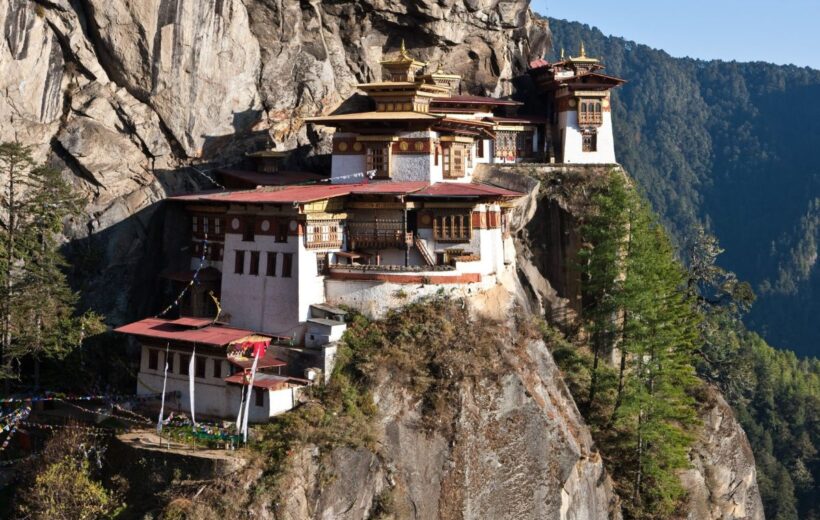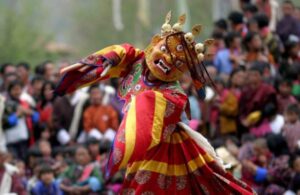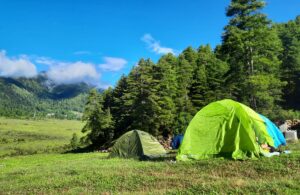Overview
Tour Duration: 11 Days
Season: October ( Festival Time)
Group Size: Any
Includes: Visa and tourist fees, accommodation in hotel, English speaking tour guide, Transport, Meals, Fees to enter sites and applicable taxes
Excludes: Flight fare, personal expenses like phone calls, laundry, shopping, travel and medical insurance, excess baggage and extra supplement cost
The “Royal Highlander Festival” is being organized at Laya, Gasa District to sensitize the highlanders on the decline of yak farming with increased vulnerability from instantly short term income-generating activities that seem to be challenging the sustainability of livelihoods in future in the highlands. The festival is also aimed to educate stakeholders on the importance of their spirited participation in enhancing the economic opportunity of the highlanders.
The climate at Laya:Laya is at an altitude of 3800m and the festival venue at 4000m. It can be fairly cold in October, with daytime temperatures ranging between 1-12 C, and nighttime temperatures dipping below 0 C. Light drizzles and snowfall may be also expected. Afternoons are windy, with an average relative humidity of 48%. The walk to Laya from Gasa can be challenging especially if the weather is wet. Extra war, wind/rainproof clothes, and good walking shoes are advised.
Included
- Accommodation on Double/ Twin Sharing Basis
- Accommodation in twin sharing basis
- Meal Serve in Hotel as per hotel fix menu basis.
- Exclusive Vehicle for transfers & sightseeing.
- Vehicle will be available as per itinerary only. Not at disposal. 9am-5pm.after 5 pm extra charges apply.
- Base category room used in the package.
- All hotel taxes etc.
- English speaking GUIDE AND driver throughout the tour. Only Bhutan part.
- One Local Sim card.
- One ltr mineral water bottle during sightseeing time only.
Excluded
- Tipping
- Personal Insurance
- Any personal consumption made which is not included in the package
- Alcoholic drinks and special non Alcoholic cocktails, non-alcoholic beverages, aerated drinks and non-aerated drinks.
- Laundry charges at hotel stays
- Entrance fee at the historical monuments.
Tour Plan
DAY 01: ARRIVAL IN PARO- THIMPHU
On arrival at the airport, meet & greet by the local representative. Then transfer to the hotel. Enroute stopover at Chunzom– the confluence of Pa Chu- the river flowing through Paro valley & Wang Chu- the river flowing through Thimphu valley.
Tacho Gang– meaning the “Temple of the hill of the excellent horse’ was built by Bhutanese Legendary, the great iron bridge builder namely Thangthong Gyalpo. It is a great spot for pictures and offers beautiful views.
Further, drive to Thimphu and check in to the hotel. You can stroll around the town on your own if interested. Overnight at Thimphu.
DAY 02: THIMPHU- PUNAKHA
The morning we will start our journey towards Punakha- it is a very warm valley. En route stop at Dochula Pass– The pass is a popular location among tourists as it offers a stunning 360-degree panoramic view of the Himalayan mountain range. The view is especially scenic on clear winter days with snow-capped mountains forming a majestic backdrop to the tranquility of the 108 chortens gracing the mountain pass. Further, drive to Punakha & visit;
Punakha Dzong– It is the most beautiful dzong in the country, especially in the spring when the lilac-colored jacaranda trees bring a lush sensuality to the dzong’s characteristically towering whitewashed walls.
Suspension Bridge: The Punakha Suspension Bridge is located very near to the Punakha Dzong and is the longest suspension bridge in Bhutan built above the Po Chu river. This hanging bridge in Bhutan is draped with prayer flags all along and provides a perfect spot for bird watching and nature photography. Overnight in Punakha
DAY 03: PUNAKHA TO GASA-TONGCHU ZAM CAMP
Early Morning leave your hotel for your approx. 4 hours drive to Gasa where the road ends, from there start your trek (4 hours) to Koina which, is your destination for tonight. Starting from the end of the road, trek for approx 4 and a half hours, the trail first winds with a gradual descend till Koina and then winds up with a gradual climb till your campsite past the small bride (Thongchu zam).Overnight Camp.
DAY 04: TONGCHU ZAM TO LAYA
After breakfast, start trekking to your destination, the beautiful highland village of Laya. The trail winds up gradually and at times with steep climbs till you reach Laya. Early arrival to your camp and enjoy the scenic beauty of the landscape and then you will come across a lot of locals in their typical Laya costumes. Overnight Camp.
DAY 05: LAYA (FESTIVAL-Day-1)
The Royal Highlander festival was first introduced last year (2016 on 16thOf October) to mark the celebration of the birth of HRH the Gyalsey; 400 years of Zhabdrung Rinpoche and the Rabjung (60 years cycle) birth year of Guru Rimpoche. This year will be the 2nd year of the Royal Highlander festival and will be held on 23rd and 24th October 2018 but this year due to the National Election it will be the first week of November 2018. The Royal Highlander festival shares the beauty and wonders of Gasa district through its nature, history and its age-old tradition and culture, to share Gasa’s vision of “Good to Great Gasa” and to finally share all theses authenticity and the simplicity of the life of the Highlanders with our guests.
During the festival, visitors can witness The traditional offering of Buelwa (Gift offering) with Auley (traditional epic poem/song recitation tradition originated from Zhabdrung Rinpoche days) that began during Zhabdrung Rinpoche’s reign in showing loyalty and respect by the community of Laya is being offered for dynamic and visionary leadership of our successive monarchs.
A variety of cultural programs will be performed by Layups. Competition such as traditional songs and dances. The various competitions on highland animals including the Yaks, horses, and Mastiffs will be held. The festival consists of a series of stalls ranging from local-based yak produce to highland technology, highland agriculture technology, medicinal herbs & plants, and others
DAY 06: LAYA (FESTIVAL-Day 2)
. Royal Highlander Festival
The Royal Highlander Festival is organized in Laya normally from 16th to 18th October, annually. Driven by the underlying goal of making the Highlands a vibrant and thriving economy, the festival aims to promote the sustainable livelihood of highlanders; showcase highlander’s innovation, and exhibit the Highlands as a Pride of Bhutan.
The festival will also be a landmark activity of Gasa Dzongkhag’s vision of Good to Great Gasa. The Good to Great Gasa is a vision inspired by His Majesty’s passion to make our country Great. The festival will also celebrate the birth of HRH the Gyalsey; 400 years of Shabdrung Rimpoche and the Rabjung birth year of Guru Rimpoche.
The festival is expected to bring together highlanders from other parts of Bhutan and other countries to exchange values, knowledge, skills and best practices related to highlands and yak farming.
2. Photo Exhibition
As a part of the festival, a Photo Exhibition on Gasa will be held from 25-28th August, every year to introduce the Royal Highland Festival. This exhibition will be featured as an event of the Mountain Echoes Festival at the Foyer, Royal University of Bhutan, Thimphu.
The exhibition will introduce the beauty of Gasa Dzongkhag, it’s nature, history, culture, and future potentials. At the same time, this will be an opportunity to introduce and promote the Royal Highland Festival in Laya every October.
DAY 07: LAYA TO THONGCHU ZAM
After the festival, we trace your way back to Thongchu Zam. Overnight at Thongchu Zam.
Day 08: THONGCHU ZAM – GASA
We go back to Gasa. Have a warm hot spring bath after your long travel. Overnight at Gasa Camp.
DAY 09: GASA – PARO
We will retrace our drive back to Paro Valley.
En-route visit Lamperi Botanical Park- Royal Botanical Park lies at an altitude of 2100 meters to 3800 meters above sea level and covers an area of 125 acres. It is also known as Rhododendron Garden because these parks have about 29 species of rhododendron. The park serves as a biological corridor connecting the Jigme Dorji National Park and Jigme Singye Wangchuck National Park. It is also a great learning destination for students, researchers, and nature lovers. The park has a rich nature reserve of flora and fauna.
On arrival we will visit Farm House– it is an opportunity to learn and experience the true culture, the living style of Bhutanese people in a Bhutanese way. You can also choose to have lunch/dinner with them and if interested, you can do a Hot stone bath (Dhotsho), it is a traditional bath of Bhutan. We Bhutanese belief that this bath has so much of medicinal benefits. Evening back to the hotel & relax. Overnight in Paro.
DAY 10: PARO- HIKE TO TAKTSANG MONASTERY
Today’s hike to Taktsang Monastery will be the main highlight of your trip. Visiting the Paro Taktsang Monastery will be an unforgettable experience due to its unique location and the views of majestic mountains and green valleys. This temple is one of the holiest sites in the kingdom and cling impossibly to a sheer cliff face 900 meters above the Paro Valley. Later retrace the drive back to Paro & evening at leisure.
Overnight in Paro
Frequently Asked Questions
Bhutan is a year-round destination. There are four seasons: summer (June to August), autumn (September to November), winter (December to February) and spring (March to May). But because of the range of altitudes in the country, and the influence of the north Indian monsoons, the climate is incredibly varied.
In the south, the humid, subtropical climate is fairly consistent year-round, with temperatures between 15oC and 30oC. Central Bhutan, with its temperate forests, has a more seasonal climate, with warm summers and cool, dry winters. The northern regions are much colder during winter. Because of the high altitude, mountain peaks are snowy year-round and the lower reaches remain cool in summer.
In summer, the Indian monsoon season runs from late June or July to late September, mostly affecting the southern regions. Most farming activities take place in the summer, when crops thrive in verdant landscapes.
Autumn, from late September or early October to late November, follows the rainy season. It is characterised by bright, sunny days and some early snowfall at higher elevations. It’s the season of feasts and festivals as farmers reap the fruits of their work.
From late November until March, the crisp, clear and sunny winter sets in, with frost throughout much of the country and snowfall common above elevations of 3,000 metres. The winter northeast monsoon brings gale-force winds at the highest altitudes through high mountain passes, giving Bhutan the name Drukyul, which means Land of the Thunder Dragon in Dzongkha (Bhutan’s national language).
Bhutan’s generally dry spring starts in early March and lasts until mid-April. It is a botanist’s delight, with nature in full bloom. Summer weather commences in mid-April with occasional showers and continues to late June.
Visitors of all nationalities, except those from India, require a visa before entering Bhutan. For all visitors, except those from Bangladesh and the Maldives, this visa must be applied for and approved in advance of travel. Visitors from Bangladesh and the Maldives also require a visa, but this can be applied for and approved either in advance of travel or upon arrival in Bhutan.
Visitors from India are able to apply for a permit but are required to hold an Indian passport or an Indian voter ID card. For Indian nationals under the age of 18, a passport or a birth certificate can be used to enter and they must be accompanied by a legal guardian.
Nationals from Switzerland and Thailand holding diplomatic or government-official passports are eligible for a visa at their port of entry.
A correctly input visa application can take up to five days to process.
The Sustainable Development Fee (SDF) is a daily levy paid by visitors to support Bhutan’s development. Since the kingdom first opened its doors in 1974, guests have played a critical role in our country’s growth.
The SDF is collected by the national exchequer and funds are allocated to various projects that create long-term, sustainable opportunities for the Bhutanese people, through free healthcare, education and training, upskilling the tourism and hospitality industry, improved infrastructure, environmental preservation and conservation, cultural preservation programmes and initiatives that support local businesses and economies. The SDF is also a vital means of maintaining the exceptional forest cover and carbon-neutrality for which our small nation is world-renowned and globally critical. The SDF also helps us to ensure that we can continue to offer guests tranquillity and an intimate experience.
The SDF is USD 100 per night for adults from all countries except for India. Children aged between 6 years and who have not yet turned 12 are eligible to pay USD 50 per night. Children who have not yet turned 6 years old do not have to pay any SDF.
The SDF for Indian nationals (showing a valid Indian passport or Voter ID card) is Nu. 1,200 (or the equivalent amount in Indian rupees) per person, per night. Children aged between 6 years and who have not yet turned 12 are eligible to pay Nu./INR 600 per night. Children who have not yet turned 6 years old do not have to pay any SDF.








